 When it comes to choosing "Healthy", not all foods are created equal. A lot of people think they are doing well because it says "all-natural" on the label. “Healthy” is a subjective measure. In terms of food, eating healthy can be challenging, thanks to deceptive marketing by major food companies.
When it comes to choosing "Healthy", not all foods are created equal. A lot of people think they are doing well because it says "all-natural" on the label. “Healthy” is a subjective measure. In terms of food, eating healthy can be challenging, thanks to deceptive marketing by major food companies.
When it comes to upgrades, I like to look for things that eliminate inflammation since that is the root cause of every disease. There are many different foods to consider giving upgrades to. Start looking at the foods you eat consistently, then look for foods that might be a little cleaner or nutrient dense. Compare your current food and a new food’s nutrition. Is the new food more nutrient dense than what you’re currently eating? If so, consider an upgrade.
If you are experiencing bloating, stalled weight loss, and/or general GI issues, try making these upgrades to your normal food selections:
Juice –> Kombucha
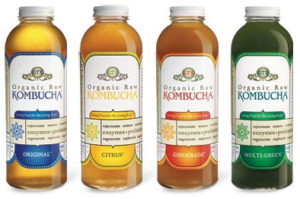
Why? Kombucha, a fermented tea, contains many beneficial health components, such as probiotics, polyphenols, antioxidants, and many digestive enzymes. All of these components are thought to strengthen the body's ability to fight cancers and diseases. Plus, Kombucha helps heal leaky gut syndrome and a host of other GI-issues. I often recommend it to people that are trying to find an alternative to soda because of the fizz.
Granola Bars –> Rice Cakes
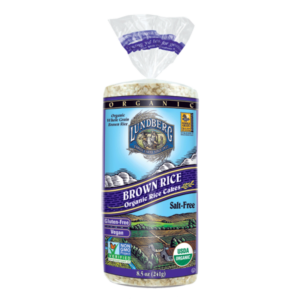
Why? Rice cakes contain two ingredients: Rice & Sea Salt. Less ingredients means less additives, preservatives, and processed chemicals. With only one ingredient to break down and absorb, your GI system will be strong and calm. Add some hummus and cucumber or almond butter and banana on top for a flavorful, healthier snack.
Whole Grain Cereal –> Puffed Rice
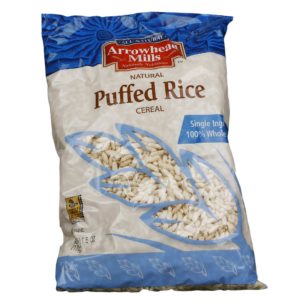
Why? Puffed Rice has one ingredient: Rice. Most cereals aim to be healthy, but often fall far short of this goal. Sweeteners and chemicals are used to improve the flavor and taste of an ordinary dry cereal, leaving your blood sugar negatively affected. Plus, this is a good alternative for people who need to be gluten free. Add some fresh berries and coconut milk for a delicious gluten free breakfast or snack. You can also toss it on some plain greek yogurt with some walnuts as a nice little snack.
Peanut Butter –> Almond or Cashew Butter
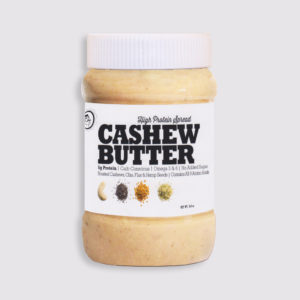
Why? Peanut Butter now ranks as one of the most modified and processed foods available to consumers. This means you’re likely ingesting plenty of unwanted, unhealthy chemicals. If you do buy peanut butter, make sure the only ingredient is peanuts. A nice upgrade is Almond or Cashew butters which provide a similar creamy, nutty flavor as well as a better nutritional profile. The ingredients? Cashews & Sea Salt.
Milk –> Kiefer
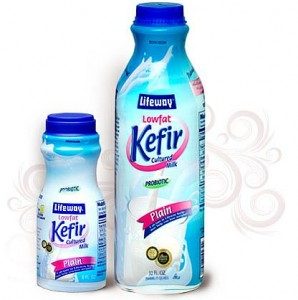
Why? Dairy is associated with many types of inflammation, and most standard dairy products are often stripped of its natural enzymes, which is why many of us feel terrible after ingesting milk. To fix this issue, try switching to Kefir, which is a fermented milk culture with many enzymes. Kefir possesses many of the healthy gut bacteria (probiotics) that has been linked to reduced gut inflammation and GI issues. I personally use Kefir in my morning smoothies or as a delcious, filling gut friendly snack in the afternoon. It’s slightly thicker than milk, and has the consistency of a thin smoothie.
Almond Milk –> Coconut Milk
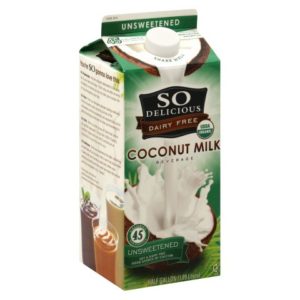
Why? Almond milk is a step in the right direction when switching from dairy to healthier options. However, coconut milk is proving to be the smarter choice in milk alternatives. Coconut has many health benefits, especially with its MCT (medium chained triglycerides), which helps lower cholesterol. Coconut milk also contains lauric acid, which boosts your immunity.
Yogurt –> Greek Yogurt(Plain)
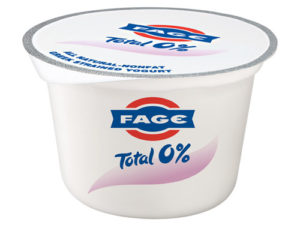
Why? Yogurt on its own has many digestive benefits, but often lacks a key macronutrient: Protein. Greek yogurt is the sensible upgrade in this category. Most greek yogurts contain 15-20 grams of digestible protein. Another upgrade is buying Plain Greek Yogurt. Why? Anything other than Plain will contain sugars, sweeteners, and/or preservatives to give it flavor. Your goal should be to always select foods without added sugar. If it comes naturally from fruit, that is different, but most fruit based yogurts aren't adding just fruit.
To satisfy taste while being health-conscious, opt for Plain and add your own fresh fruit (blueberries, strawberries, etc.) to your greek yogurt. Make it even more nutrient dense by adding some walnuts and bee pollen. :)
Ground Beef –> Ground Turkey Breast
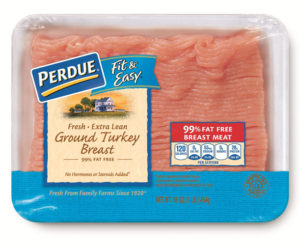
Why? If you buy organic, grass-fed beef, then eat your beef. However, if you buy regular ground beef, try ground turkey instead.
Since many cows are fed feed that is genetically modified, it's best to avoid those cheaper cuts. Cheaper beef is hard on the digestive system, and is associated with stomach bloat and general puffiness. Couple this with most people falling into the sedentary lifestyle category (<1 hour of physical activity/day), meat has more drawbacks than value for the common individual. Instead, consider Ground Turkey Breast when making your next dish. Turkey has no reported side-effects of any kind, and has a much better nutritional profile, with far less fat and added hormones.
Fruits and Vegetables--->From Canned to Fresh or Frozen

Why? Fresh or frozen produce doesn’t contain added preservatives or salt like a lot of canned products do. And, if you’re eating produce often, fresh and frozen fruits and vegetables can provide better nutrition than its canned counterpart. The exception to this rule is canned tomatoes and tomato paste. Processed tomatoes contain more lycopene than fresh or frozen tomatoes. Lycopene gives the tomatoes their beautiful color and also helps fight off free radicals in the body. Studies have shown it can also help lower the risk of stroke and certain cancers.
Frozen produce is frozen at the peak of that food’s season and can be a good option if you’re craving a food out of season or if you only need to use a little of that food in a recipe. It can also take some of the prep work out of certain foods with pits or shells.
Eating fresh produce can be more affordable, especially when in season. It also allows for more variety in your diet than the frozen vegetable aisle.
Salad Greens: Iceberg ---> Romaine, Butter, and Red Leaf and leafy greens
It’s hard to not think about salad when healthy eating comes to mind. Greens are good for you, but not all greens are created equal. At the bottom of the barrel is Iceberg lettuce, which is a major player in fast food and lower-end restaurant salads. It pales nutritionally in comparison to other lettuces or salad greens you could choose.
Why? Iceberg lettuce is 96% water with only a very small amount of vitamins A, K and fiber. If you’re buying or eating iceberg regularly, consider switching it out for more nutrient dense lettuces like romaine, butter, red leaf lettuces. They have more than five times the vitamin A and K, which are important for healthy blood clotting, tissue formation and protection against free radicals. Even better, upgrade your salad greens with a salad mix of both colorful and dark greens to get a good variety of vitamins, minerals, and flavors. The darker and vibrant the colors are in the greens, the more phytonutrients they contain.
Potatoes: White--->Sweet

White potatoes do have benefits, and I enjoy them at times roasted or baked. They’re High in potassium, vitamin C and B6, but those values can be diminished when fried or consumed with unhealthy options. Consider cutting back on how many white potatoes you eat and upgrade to its healthier counterpart, the sweet potato instead.
A sweet potato is much higher in vitamin A, C, antioxidants, potassium, fiber, and lower in carbohydrates than the white potato. Another reason to upgrade is its versatility. Sweet potatoes can be sweet or savory and even used in baking, as a healthy upgrade for pancakes, muffins etc.
Rice: White --->Brown

Out of all the rice varieties available, white rice is the most popular option World Wide. Despite its popularity, it’s not as nutrient dense as brown rice. When white rice is milled, the bran, hull and germ that surrounds the rice kernel are removed leaving it a fairly non-nutritious source of carbohydrates. This process reduces the amount of nutrients the rice has.
Brown rice, on the other hand, still has its bran, hull, and germ intact, so it's naturally fortified with iron, thiamine, folate, niacin, Vitamin B6 and is packed with fiber which is great for keeping you satiated. Personally, I love the nutty flavor and often make a batch at the beginning of the week to use for various bowls like schwarma, poke, and burrito.
Grains: Enriched and Refined ---> Whole

When people think of carbs, they often think of grains. And, like many of these products, all grains are not created equal. The best thing to keep in mind is to avoid foods that are processed. You know, the boxed baking mixes, milled flour, crackers, breads, pastas etc. When it comes to grains, choose whole grains like Oats, Barley, Corn, Brown Rice, Quinoa, and Spelt, all terrific options that will give your body nutrient -dense calories that help your body recover from workouts and fuel your body with much needed energy. For Bread, sprouted bread like Ezekial bread is great toasted with some natural peanut butter on top.
Protein Bars---> Rx or Lara Bars

Protein bars have gotten quite popular, but you need to make sure you are choosing brands that are healthy with ingredients you can pronounce. Most protein bars on the market are glorified candy bars packed with added sugar and preservatives. If I don't make my own, I'll grab either an Rx bar or a Lara Bar. Both only include about 4 ingredients and they are sweetened naturally with dates.
What Will You Upgrade?
Now that you’ve got more ideas on what to upgrade in your fridge and pantry, start looking into the foods you’re eating. Are they as good for you as the front of the package says? Look at the labels for simple ingredients and no added sugar. Try a new bright or darkly colored fruit or vegetable in a meal or snack. Upgrade to whole, minimally processed grains and dairy to get more nutrients without added preservatives or sugars. Have fun and experiment with new, healthier foods to match your healthier life.
Cheers to healthy upgrades!
Ruth xoxo
ygowm Q카지노 식보게임 트럼프카지노먹튀 바카라사이트 예스카지노 실시간바카라 온라인슬롯잭팟 스피드바카라 카지노사이트 실시간바카라사이트 온라인룰렛 안전카지노 밀리언카지노 카심바슬롯 포텐슬롯사이트 포텐슬롯 카지노주소 생방송바카라 블랙잭추천 바카라이기는법 비비아이엔게이밍 더킹카지노 https://wsobc.com 바카라전략슈 메리트카지노먹튀 카심바카지노 바카라사이트 비바카지노주소 슬롯나라 moroamee234 카심바주소 바카라전략 포텐슬롯사이트 카심바주소 슬롯머신추천 온라인바카라 온라인바카라 라이브바카라 온라인슬롯잭팟 잭팟시티슬롯 플러스카지노 포텐슬롯주소 007카지노 33카지노 바카라잘하는방법 포텐슬롯사이트 바카라사이트 스핀슬롯 더킹카지노 https://wsobc.com 바카라전략슈 바카라시스템배팅 온라인카지노 카심바슬롯 프로카지노 샌즈카지노먹튀 https://wsobc.com 바카라사이트 온라인카지노 포텐슬롯주소 moroamee234 우리카지노먹튀 온라인슬롯추천 비보게이밍 개츠비카지노 온라인카지노 카심바슬롯 바카라잘하는법 카지노랜드 더킹카지노 https://wsobc.com 바카라전략슈 카지노사이트추천 스피드바카라 슬롯머신 MGM카지노 온라인슬롯잭팟 https://wsobc.com 비바카지노주소 카지노사이트주소 포텐슬롯 moroamee234 천사카지노 바카라잘하는방법 카지노슬롯사이트 식보게임사이트 잭파시티먹튀 슈퍼카지노 카지노사이트주소 카지노사이트 리조트월드카지노 에그벳슬롯 슬롯카지노 포텐슬롯 플레이슬롯 더나인카지노 바카라잘하는법 온라인바카라 더킹카지노 https://wsobc.com 바카라전략슈 인터넷슬롯머신 바카라사이트 포텐슬롯사이트 https://wsobc.com 카심바주소 메이저카지노 온라인카지노 moroamee234 포텐슬롯사이트 포텐슬롯사이트 바카라사이트 krkqq
https://www.bewin777.com
https://www.dewin999.com
https://www.ktwin247.com
https://www.nikecom.net
https://www.netflixcom.net
https://wsobc.com
로얄카지노
비비카지노주소
카지노사이트
바카라사이트
온라인카지노
안전한카지노사이트
카지노하는곳
퀸즈슬롯
바카라게임
온라인카지노게임사이트
모바일바카라
룰렛추천주소
바카라 패턴
온라인바카라
카심바코리아 카지노슬롯
로얄카지노
비비카지노주소
카지노사이트
바카라사이트
온라인카지노
안전한카지노사이트
카지노하는곳
퀸즈슬롯
바카라게임
온라인카지노게임사이트
모바일바카라
룰렛추천주소
바카라 패턴
온라인바카라
카심바코리아 카지노슬롯
https://youube.me/
https://gamja888.com/
https://instagrme.com/
https://youubbe.me/
https://Instagrme.net/
https://instagrme.site/
https://instagrme.live/
https://naverom.me/
http://facebookom.me/
Great article Ruth! These substitutions are great options. I’m really trying to focus on adding more anti-inflammatory foods. If you have any previous articles or plan to make any articles in the future focusing on that, I’d love to read it. Thanks so much for sharing.